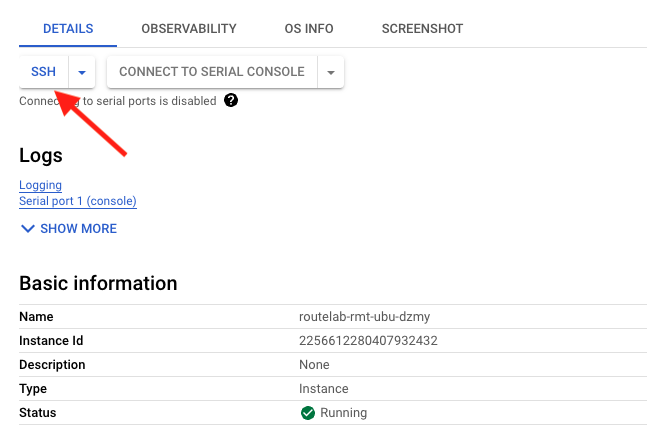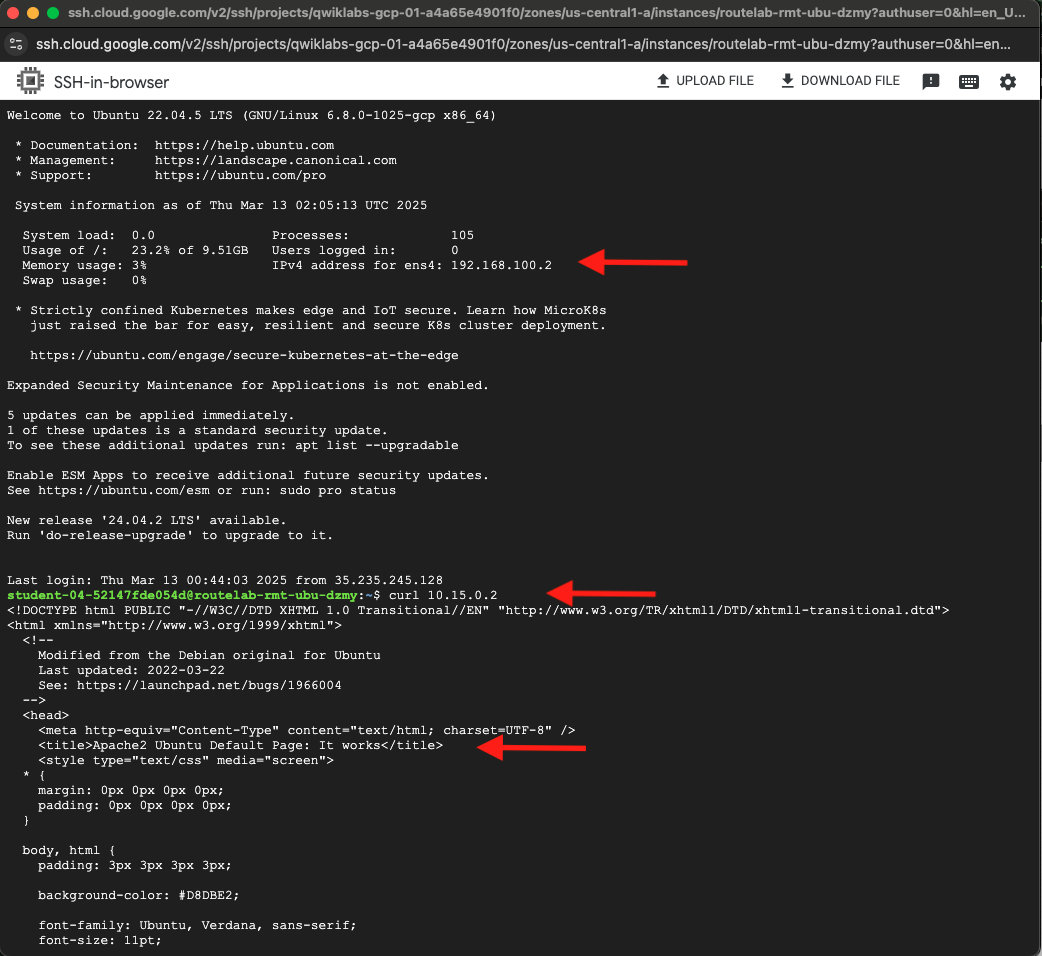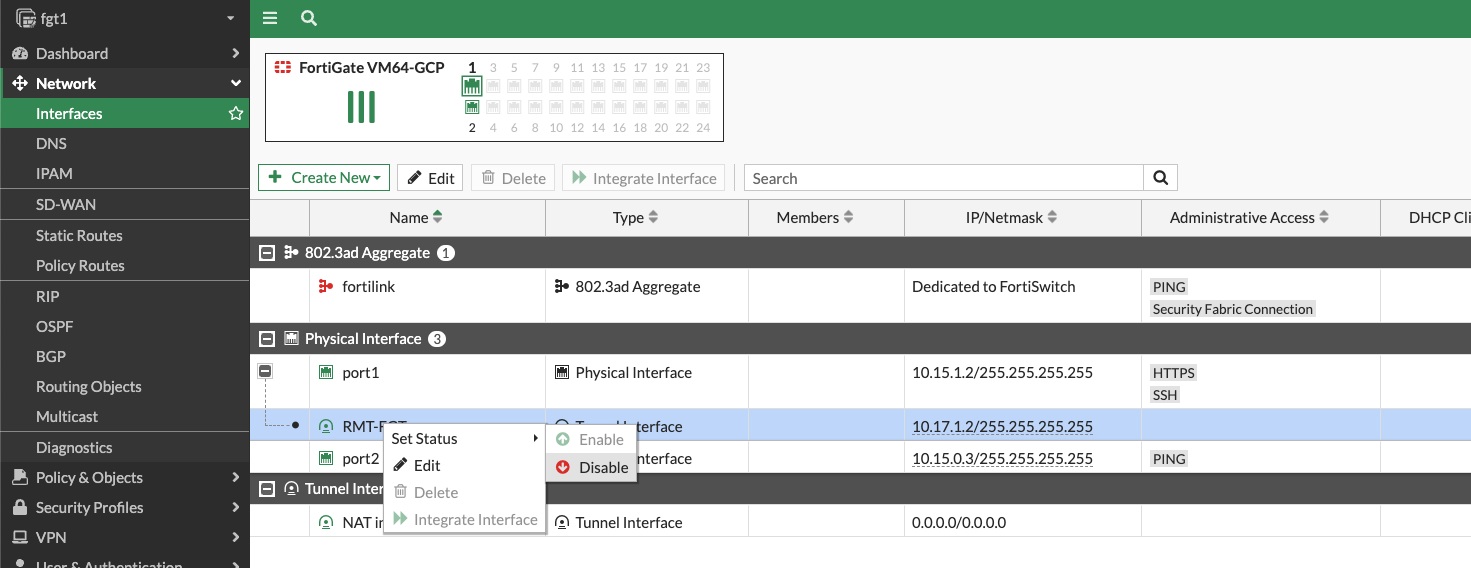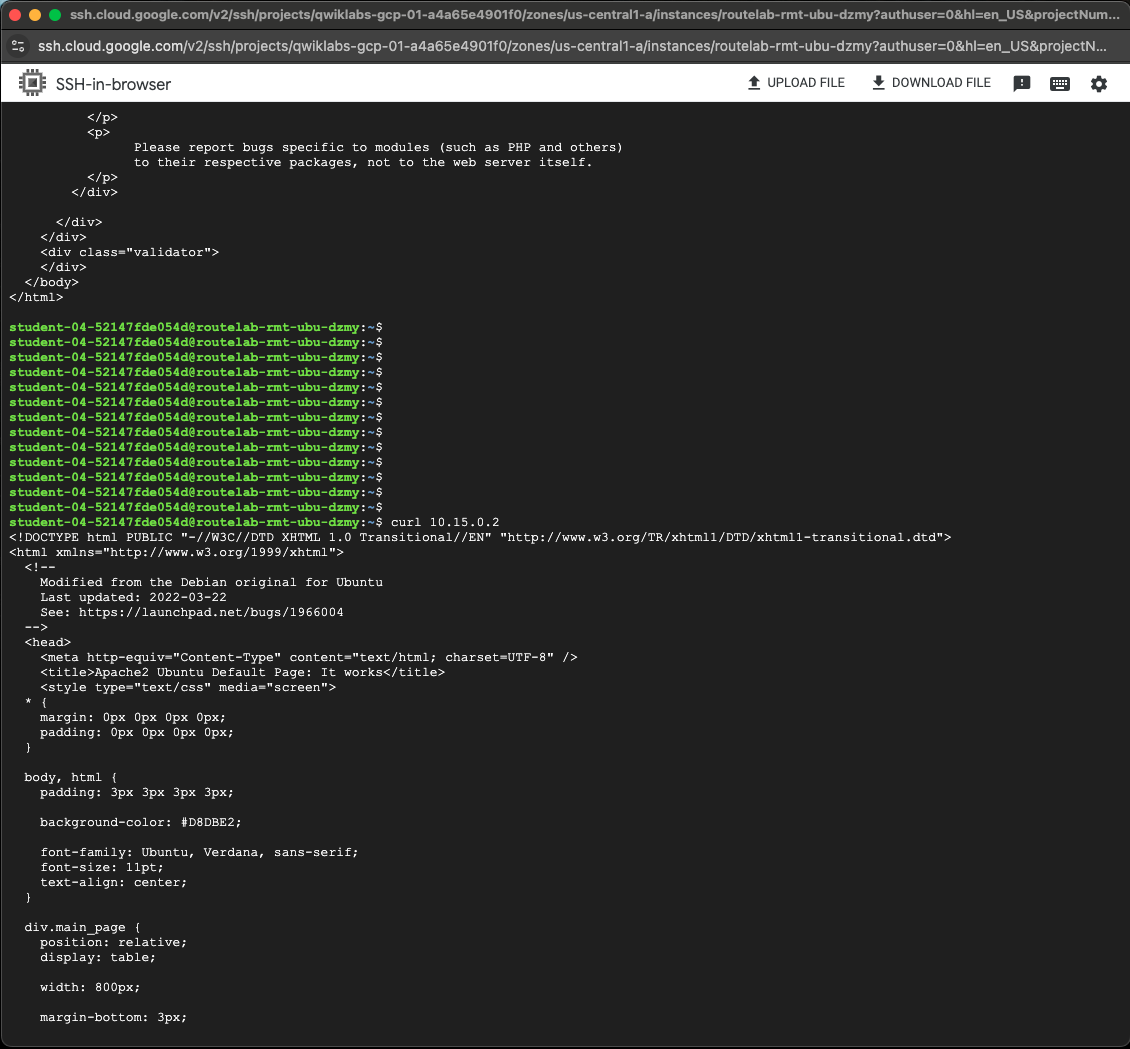Emulate Loss of IPSec Tunnel
| Goal | Verify that routing works after failover |
| Task | Log into Fortigate 1 and shutdown IPsec tunnel to Remote FortiGate |
| Verify task completion | You should still be able to reach the GCP application over the IPsec tunnel to FortiGate 2 |
Test Failover
As we saw previously, the remote fortigate was preferring the route over tunnel FGT-1 for the 10.15.0.0/24 subnet.
Before we perform the failover, let’s log into our remote GCP Ubuntu instance and curl the Ubuntu instance in us-central1 to verify continuity.
- From the GCP console, Navigation Menu select Compute Engine > VM instances
- click on the VM named **routelab-rmt-ubu-**random"
- On the DETAILS tab, click on SSH at the top of the screen
- If asked to do so, athorize. On the SSH-in-browswer window that pops up, you will notice the ip address of the device 192.168.100.x and you should see a prompt. At the prompt type
curl <Ubuntu IP>The default curl port is http 80, which we enabled earlier in our policy. You should see the standard Apache2 Default page, indicating that it works.
Now let’s Log into FortiGate1 (fgt1) by typing
https://fortigate1-ip:8443the username isadminand the password isFortinet1234$- Navigate to Network > Interfaces and hit the “+” sign next to port1
- Right click on RMT-FGT tunnel interface and select Set Status > Disable
Navigate to the cli of the remote FortiGate and check that routing for 10.15.0.0/25 is now traversing tunnel FGT-2
rmt-fgt # get router info routing-table bgp Routing table for VRF=0 B 10.15.0.0/24 [200/333] via 10.17.2.2 (recursive via FGT-2 tunnel 34.74.104.177), 00:00:03, [1/0] B 10.16.0.0/24 [200/100] via 10.17.2.2 (recursive via FGT-2 tunnel 34.74.104.177), 02:04:25, [1/0]- As we can see, the route is failed over
Return to SSH-in-browser and confirm that we can still reach our ubuntu server in us-central1
Please go back to FortiGate 1 and re-enable the IPSec Tunnel. This will be important for the next section.
Info
Notice that we are using BFD for the BGP sessions over IPSec. When I was first testing this, failing the IPSec tunnel resulted in a 3 minute black holing of traffic. This was because we had to wait for the default BGP neighbor timers to expire before withdrawing the route. During that time, the IPSec tunnel was down so the original BGP route had a bad next hop, meaning that we ended up using the default out to the internet. I enabled BFD to solve this problem. When BFD is in use for BGP, we recognize the neighbor down much more quickly. The result was nearly instant failover to FGT-2 tunnel. BGP neighbor timers can be configured, to reduce failover time, but this is not as fast as BFD.
Chapter Synopsis
This chapter demonstrated the resilience and high-availability of our hybrid cloud network. We simulated a network failure by manually disabling the primary IPsec tunnel between our remote site and the us-central1 FortiGate.
We observed the following:
- Automatic Failover: Thanks to our redundant design and dynamic BGP routing, the remote FortiGate automatically detected the path failure.
- Route Convergence: The routing table on the remote FortiGate quickly converged, redirecting traffic destined for the
us-central1network through the secondary IPsec tunnel to theus-east1FortiGate. - Seamless Connectivity: We confirmed that connectivity from our remote server to the application server in
us-central1was maintained throughout the failover, with minimal disruption.
A key component highlighted in this test was the use of Bidirectional Forwarding Detection (BFD), which enabled near-instantaneous detection of the link failure, allowing BGP to reconverge much faster than it would with its default timers. This exercise proves that our architecture can withstand a regional link failure without losing connectivity to our cloud resources.



